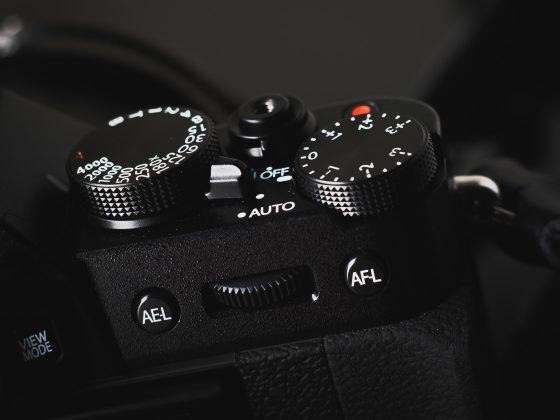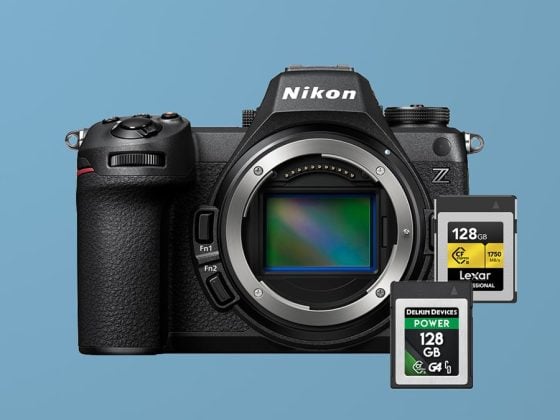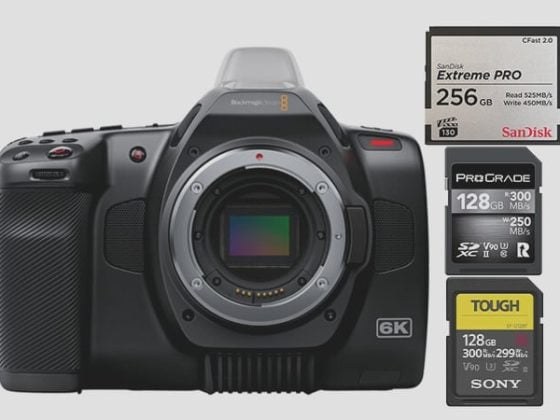An in-camera comparison between all the most popular UHS-I and UHS-II memory cards and how they perform in the Panasonic GH5.
There are a lot of options for memory cards for the Panasonic GH5, some work great, others not so great. Use this guide to find the fastest SD memory cards for your Panasonic GH5.
Camera Specs
| Sensor: Micro 4/3 20.3 Digital Live MOS / Processor: Venus Engine Image Processor SD Memory Card Type: UHS-II / UHS-II Video: Internal 4:2:2 10-Bit 4K Video at 24/30p Continuous Burst: 12fps Size of Buffer: 1.5GB Uncompressed Shots Till Buffer Fills: 70 Est. Time Taken To Clear Buffer: 14-15 seconds. (UHS-II Cards) Memory Card Capacity: 32GB – 128GB |
Be sure to check out the Panasonic GH5 Accessories page for some great recommendations.
Best Memory Card For The Panasonic GH5
Top 5 Best Memory Cards Panasonic GH5
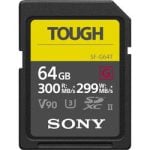 Many new cards have been released since the Panasonic Gh5 came out, so to cut to the chase, here is an updated list of all the best and fastest memory cards for the GH5.
Many new cards have been released since the Panasonic Gh5 came out, so to cut to the chase, here is an updated list of all the best and fastest memory cards for the GH5.
| Card Name | In-Camera Speed | See Price |
| Sony Tough G | up to 75MB/s | Amazon |
| Sandisk Extreme Pro 300MB/s | 72.08MB/s | Amazon |
| Transcend | 76.49MB/s | Amazon |
| ProGrade V90 | up to 75MB/s | Amazon |
| Sony M Tough | 59.45MB/s | Amazon |
General Performance And Speed Chart
Like some of the other Panasonic cameras as well as Sony and a few Nikons, the Pansonic GH5 has a memory bus speed that caps at around 35MB/s using UHS-I memory cards. UHS-II cards allow for more bandwidth, which means a max speed of around 70 – 80MB/s. Just over double the speed.
This means if you want to record internal 400Mbps 4k or 6k video, you’ll need to use a UHS-II memory card.
However, the tests show that not all UHS-II memory cards are working properly with the GH5 right now. See the chart below.
All USB 3.0 tests were done using CrystalDisk – Windows 10, with the Lexar SR2.
| SD Memory Cards | USB 3.0 Read | USB 3.0 Write | GH5 Write |
| UHS-II | |||
| Transcend | 290.2 MB/s | 182.1 MB/s | 76.49 MB/s |
| Sandisk Extreme Pro 300 | 263.2 MB/s | 233.4 MB/S | 72.08 MB/s |
| Sandisk Extreme Pro 280 | 260.5 MB/s | 214.8 MB/s | 69.05 MB/s |
| Toshiba Exceria Pro | 258.8 MB/s | 226.5 MB/s | 67.95 MB/s |
| Delkin 1900X v60 | 273.3 MB/s | 97.3 MB/s | 59.95 MB/s |
| Sony M | 253.2 MB/s | 91.62 MB/s | 59.45 MB/s |
| Delkin V90 | 245.1 MB/s | 164.6 MB/s | 36.27 MB/s |
| Lexar 2000x | 272.7 MB/s | 244.5 MB/s | 35.45 MB/s |
| Lexar 1000x | 147.4 MB/s | 78.4 MB/s | 34.92 MB/s |
| UHS-I | |||
| Samsung Pro+ U3 | 97.5 MB/s | 87.3 MB/s | 36.61 MB/s |
| Samsung Pro U3 | 97.7 MB/s | 78.6 MB/s | 36.45 MB/s |
| Sandisk Extreme Pro U3 | 98.6 MB/s | 90.8 MB/s | 36.05 MB/s |
| Sandisk Extreme Plus U3 | 99.0 MB/s | 64.4 MB/s | 36.17 MB/s |
| Sandisk Extreme U3 | 72.43 MB/s | 54.1 MB/s | 36.10 MB/s |
| Kingston U3 | 98.1 MB/s | 90.4 MB/s | 36.02 MB/s |
| PNY Elite Performance U3 | 96.5 MB/s | 66.1 MB/s | 35.03 MB/s |
| Samsung Pro U1 | 96.3 MB/s | 82.2 MB/s | 35.03 MB/s |
| Delkin 633x U3 | 98.3 MB/s | 88.7 MB/s | 34.87 MB/s |
| Transcend U3 | 96.7 MB/s | 68.4 MB/s | 34.67 MB/s |
| PNY Elite Performance U1 | 96.5 MB/s | 66.5 MB/s | 34.65 MB/s |
| Sony U3 – Old Model | 96.5 MB/s | 84.5 MB/s | 34.50 MB/s |
| Lexar 600x U1 | 95.4 MB/s | 64.8 MB/s | 34.30 MB/s |
| Lexar 633x U3 | 93.3 MB/s | 67.3 MB/s | 34.28 MB/s |
| Sony U3 – New Model | 96.7 MB/s | 56.2 MB/s | 34.17 MB/s |
Recommended SD Memory Cards For The GH5
Internal 4k or 6K Recording | UHS-I vs. UHS-II
For internal recording, I only had access to the 150Mbps bitrate and every card I tested worked fine, including UHS-I cards, even when shooting 6k burst stills. However, Panasonic will offer a 400Mbps update later this year. So if you plan on using that, you will need to use a UHS-II card that can write at least faster than 50MB/s.
Memory Cards That Don’t Work Well
For some reason, the Lexar UHS-II and one of the Delkin cards would not work properly as UHS-II memory cards. I tried four of my different Lexar cards both in slot one and in slot two and they wouldn’t work. It could be the camera I was using was just a bad copy, or it could be some firmware issue that could later get resolved since I know my cards are fine after testing them in just about every other camera on the market.
Panasonic GH5 Frequently Asked Questions
Can I use Micro SD Memory Cards in the Panasonic GH5?
Yes, you actually can but I have had bad experiences using Micro SD memory cards. Basically what would happen to me was the cards would sometimes wiggle loose inside the adapter causing a memory card error. It doesn’t happen with every type of card or adapter but it does happen sometimes. For that reason, I don’t recommend buying them. Plus, they are small and easy to lose and if you buy some older models, they could put out some serious heat that could potentially melt the card.
What Cards Work Best For Video?
If your shooting at 100Mbps or even 150Mbps you can use UHS-I memory cards. However, if you’re buying this camera for video, which you are, you’ll want to take advantage of the 400Mbps video and for that, you’ll need a UHS-II card.
My Card Isn’t Fast, What’s Wrong?
People still have a lot of problems with cards, here are a few reasons.
- Some cards like the Lexar UHS-II cards and one of the Delkin UHS-II cards aren’t working as they should.
- It could simply be a bad card. It happens. Just make sure you test your cards right when you get it. Shoot several minutes of video at a time to make sure everything is working.
- You could have a fake card! There are a lot of counterfeit cards out there, especially on eBay and occasionally on Amazon. Be sure to get your cards from a trusted source. B&H and Adorama are great, or, if you use Amazon, make sure you buy from a trusted seller.
- Sometimes some cards perform slowly until you put a few shots on them. Not sure why this is, but if you notice your card performing slowly right after formatting, this could be the cause.
- Make sure your cards are clean and that the connection terminals inside your camera are clean and not damaged
Do Lexar Cards Suck?
As a brand, Lexar cards do not suck. They work great in every camera I’ve tested except this one. So I’m convinced it’s likely more of an issue with the camera’s hardware not being compatible with the way Lexar cards work. So if you’re a GH5 user, yes, I guess you could say Lexar sucks. 🙂
Do I really need a UHS-II memory card?
If you’re serious about video, then yes, you need UHS-II cards.
What Size Memory Card Should I Get, 32GB or 64GB?
64GB cards are great, especially if you’re only shooting 150Mbps. You will need a few of them though. With 400Mbps you’ll likely want to go bigger.
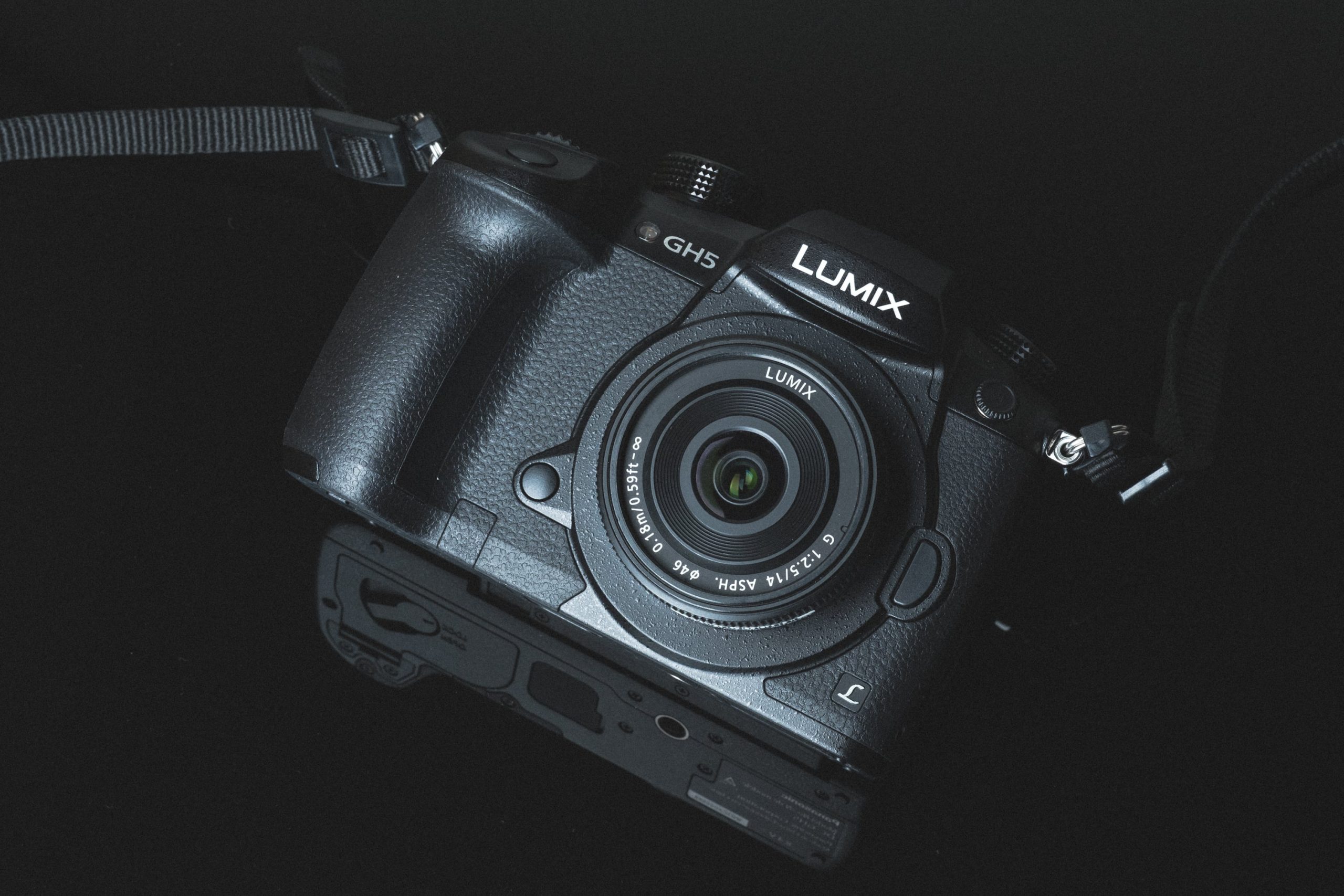
Best SD Memory Card Fuji GH5 | Bottom Line
The GH5’s performance with memory cards was slightly below average. The camera’s hardware doesn’t seem to be up to spec with some of the competition in terms of how it handles memory cards. However, Panasonic was smart to at least offer UHS-II memory card compatibility which allows the camera to perform as fast as a UHS-I camera would (like Fujifilm) that uses good hardware.
In other words. Panasonic wanted to save money on cheap hardware, but now you have to pay for it by buying more expensive memory cards when cameras like the Fujifilm X-T2 can get the same performance out of UHS-I cards. This is something that frustrates me and should frustrate you, and we need to complain about this stuff so these companies change their practice.
I hope this article was helpful and I’ll be honest by saying I don’t know a ton about Panasonic cameras. So if you find out anything else that might be helpful to readers, please leave a comment and I’ll continue to improve this article.

